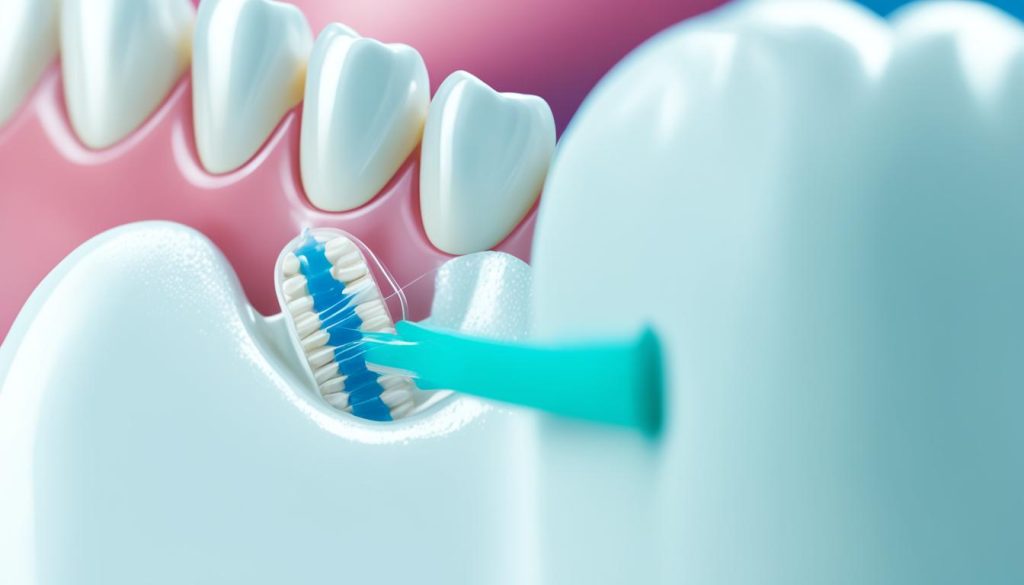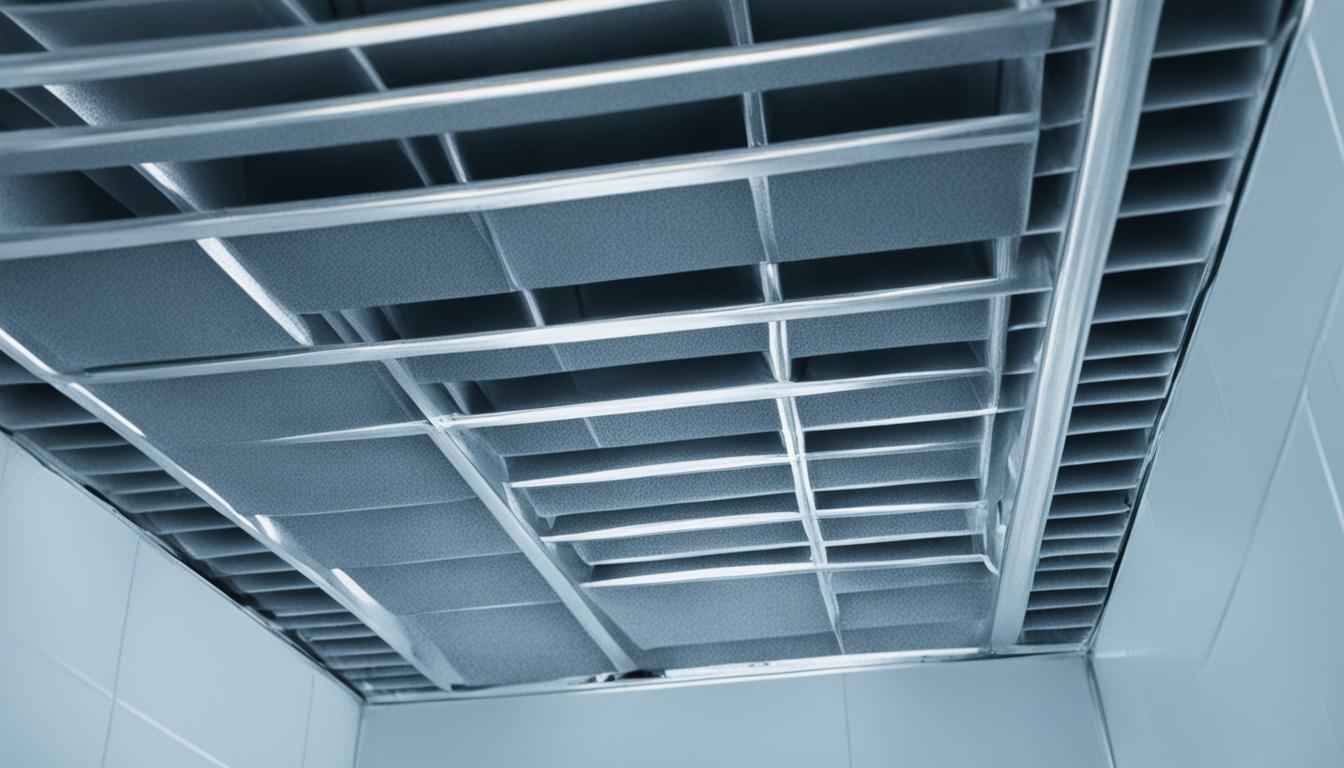Plaque is a common dental issue that forms when bacteria, food particles, and saliva combine to create a sticky film on the teeth and along the gum line. If left untreated, plaque can harden and become tartar, leading to dental problems such as tooth decay and gum disease. Thankfully, there are effective methods and techniques that can help remove plaque and maintain good oral hygiene.
In this article, we will explore how to clean teeth plaque and the best plaque removal techniques, natural ways to remove plaque, and the use of plaque removal tools. By following these tips, you can achieve a healthier smile and prevent future dental complications.
To start, let’s dive into the importance of good oral hygiene practices and how they contribute to preventing plaque buildup and maintaining overall dental health.
The Importance of Good Oral Hygiene Practices
Maintaining good oral hygiene practices is essential for preventing plaque buildup and maintaining overall dental health. By following proper tooth cleaning tips, individuals can effectively remove dental plaque, thereby reducing the risk of tooth decay, gum disease, and other oral health issues.
One of the fundamental oral hygiene practices is regular brushing. Brushing the teeth at least twice a day, using a soft-bristled toothbrush and fluoride toothpaste, helps remove plaque and food particles from the teeth’s surfaces and gum line. It is important to brush gently in circular motions, ensuring that all tooth surfaces are thoroughly cleaned.
Flossing is another crucial component of maintaining good oral hygiene. Daily flossing with dental floss or interdental brushes removes plaque and debris from areas that a toothbrush cannot reach, such as between the teeth and along the gum line. This helps prevent plaque accumulation and reduces the risk of gum disease.
The Dental Plaque Prevention Toolkit
To enhance dental plaque prevention, various tooth cleaning tools can be incorporated into one’s oral hygiene routine. Here are some commonly used tools:
| Tool | Description |
|---|---|
| Electric Toothbrush | An electric toothbrush uses oscillating or rotating bristles to effectively clean the teeth. It can be particularly beneficial for individuals with limited dexterity or those prone to plaque buildup. |
| Water Flosser | A water flosser uses a stream of water to remove plaque and debris between the teeth and along the gum line. It can be an excellent alternative for those who struggle with traditional flossing. |
| Tongue Scraper | A tongue scraper is designed to remove bacteria and debris from the surface of the tongue. Regular use can help improve oral hygiene and reduce bad breath. |
These tools complement regular brushing and flossing, contributing to a comprehensive dental plaque prevention routine.
“Good oral hygiene practices are crucial for preventing plaque buildup and maintaining a healthy smile. Regular brushing, flossing, and incorporating appropriate tooth cleaning tools are key steps in preventing tooth decay, gum disease, and other oral health issues.” – Dr. Jane Smith, Dental Hygienist
In addition to brushing, flossing, and using appropriate plaque removal tools, it is important to maintain a balanced diet and avoid excessive consumption of sugary and acidic foods. A healthy lifestyle, including regular exercise and avoiding tobacco use, further supports optimal oral health.
By implementing these oral hygiene practices and following tooth cleaning tips, individuals can effectively prevent dental plaque buildup, maintain healthier teeth and gums, and achieve a brighter smile.
How to Clean Teeth Plaque?
When it comes to maintaining good oral hygiene and removing plaque from the teeth, knowing the proper tooth brushing techniques is essential. By following these techniques, you can ensure thorough plaque removal and promote a healthy smile.
First and foremost, it is recommended to brush your teeth at least twice a day for two minutes each time. This regular brushing routine helps to remove plaque and prevents its buildup. Use a soft-bristled toothbrush to avoid damaging the enamel and gums.
During brushing, it’s crucial to pay attention to all tooth surfaces, including the gum line. Plaque tends to accumulate in these areas, leading to gum disease if left unattended. To properly clean the teeth, use gentle circular motions to dislodge plaque from the tooth enamel and gum line.
In addition to manual toothbrushes, there are various plaque removal tools available that can enhance the effectiveness of plaque removal. Consider incorporating these tools into your oral care routine:
- Electric Toothbrushes: These toothbrushes use oscillating or vibrating bristles to provide a more thorough cleaning compared to manual brushing. The rapid movement of the bristles helps dislodge plaque and bacteria from the teeth.
- Water Flossers: Water flossers, also known as oral irrigators, use a stream of water to clean between the teeth and along the gum line. This can be especially beneficial for individuals with braces or those who find traditional flossing challenging.
By utilizing these plaque removal tools alongside proper tooth brushing techniques, you can create a comprehensive oral care routine that effectively eliminates plaque and promotes clean and healthy teeth.
Remember, consistent oral hygiene practices, including regular brushing, flossing, and the use of plaque removal tools, are key to removing plaque and maintaining good dental health.
| Method | Materials Needed | Steps | Tips |
| Brushing | Toothbrush, fluoride toothpaste |
|
Use a soft-bristled brush and replace it every 3 months. |
| Flossing | Dental floss |
|
Be gentle to avoid damaging gums. |
| Mouthwash | Antiseptic mouthwash |
|
Use a mouthwash with fluoride for extra protection. |
| Professional Cleaning | Dental visit, professional tools |
|
Recommended every 6 months. |
| Oil Pulling | Coconut oil or sesame oil |
|
Do this in the morning before eating or drinking. |
| Baking Soda | Baking soda, water, toothbrush |
|
Use this method sparingly to avoid enamel damage. |
| Dietary Changes | Foods high in fiber, water, dairy products |
|
Limit sugary and acidic foods. |
| Using Dental Picks | Dental picks or interdental brushes |
|
Use after meals to remove food particles. |
| Electric Toothbrush | Electric toothbrush, fluoride toothpaste |
|
Choose one with a timer to ensure 2-minute brushing sessions. |
| Chewing Sugar-Free Gum | Sugar-free chewing gum |
|
Helps increase saliva flow, which can wash away food particles. |
Natural Remedies and Homecare Tips
When it comes to removing plaque at home, there are natural remedies and homecare tips that can be beneficial. While it’s important to remember that these methods should not replace regular brushing and flossing, they can help enhance your oral hygiene routine.
One natural remedy that may aid in plaque removal is brushing with baking soda toothpaste. Baking soda, with its mild abrasive properties, can help eliminate plaque without causing damage to the enamel. Simply apply a small amount of baking soda toothpaste to your toothbrush and brush as usual.
Another traditional method believed to remove bacteria and plaque is oil pulling. This technique involves swishing edible oils, such as coconut or olive oil, in your mouth for about 10-15 minutes and then spitting it out. The oil is thought to attract and remove harmful bacteria and plaque. However, it’s important to note that oil pulling should not replace your regular oral hygiene practices.
Remember, while natural remedies can be helpful, they should always be used in conjunction with proper oral hygiene practices.
To summarize:
- Brush with baking soda toothpaste to help eliminate plaque without damaging the enamel.
- Consider trying oil pulling with edible oils such as coconut or olive oil, but remember that it is not a substitute for regular brushing and flossing.
By incorporating these natural remedies and maintaining a consistent oral care routine, you can support plaque removal and improve your overall oral health.

| Remedy | Method |
|---|---|
| Brush with baking soda toothpaste | Use a small amount of baking soda toothpaste and brush as usual |
| Oil pulling | Swish edible oils such as coconut or olive oil in the mouth for 10-15 minutes, then spit it out |
Flossing and the Importance of Interdental Cleaning
Flossing is a crucial step in your oral hygiene routine that helps remove plaque from areas that a toothbrush cannot reach. By flossing at least once a day using proper techniques, you can prevent plaque buildup and maintain optimal dental health.

Plaque tends to accumulate between the teeth and along the gum line, where toothbrush bristles cannot effectively reach. Flossing allows you to remove the plaque and food particles that get trapped in these tight spaces, reducing the risk of tooth decay and gum disease.
To achieve the best results, use approximately 18 inches of dental floss and wrap it around your middle fingers. Hold the floss tightly between your thumbs and forefingers, gently gliding it between your teeth using a back-and-forth motion. Ensure you reach below the gum line, but be gentle to avoid causing any gum irritation or bleeding.
Interdental Cleaning Tools for Effective Plaque Removal
In addition to traditional dental floss, there are various interdental cleaning tools available that can enhance plaque removal:
- Floss picks: These handy tools combine a short piece of floss with a handle, making it easier to maneuver between teeth.
- Interdental brushes: Designed with small bristles, these brushes can clean larger gaps between teeth and braces.
- Water flossers: These devices use a stream of water to flush out plaque and debris from hard-to-reach areas.
Experiment with different tools to find the one that works best for you. Remember, the goal is to thoroughly clean the spaces between your teeth and maintain a healthy oral environment.
“Flossing is not just an optional extra to brushing – it’s an essential part of your oral care routine.”
Regular flossing alongside brushing and rinsing helps prevent plaque buildup and ensures a thorough dental hygiene routine. By taking the time to floss daily and incorporating interdental cleaning tools, you can achieve a clean and healthy smile.
The Role of Dental Professionals
Regular visits to dental professionals are vital for maintaining optimal oral health. Dentists and dental hygienists have the necessary tools and expertise to perform professional dental cleanings, removing plaque and tartar from the teeth effectively. They can also assess the overall dental health and provide personalized recommendations for effective plaque control and oral care routine.
During a dental check-up, a dental professional will conduct a thorough examination of your teeth, gums, and mouth. This examination helps in identifying any signs of dental plaque buildup or early gum disease. Dental professionals use specialized instruments, such as a dental mirror and probe, to examine the teeth and gums closely. They can detect early signs of dental issues and provide appropriate treatment before they worsen.
Dental cleanings performed by professionals are essential for dental plaque removal. Using specialized instruments, dental professionals can remove plaque and tartar from hard-to-reach areas that regular brushing and flossing may miss. They also have the knowledge and experience to ensure that the cleaning procedure is safe and effective, without causing any damage to the teeth or gums.
Moreover, dental professionals can provide personalized recommendations for effective plaque control and an optimal dental care routine. They can evaluate your oral hygiene practices, identify areas that need improvement, and suggest appropriate techniques and products for better dental plaque removal. They may recommend specific toothbrushes, toothpaste, floss, or mouthwash that suits your individual needs.
| Dental Professional Services | Benefits |
|---|---|
| Professional dental cleanings | Remove plaque and tartar effectively |
| Thorough dental examination | Detect early signs of dental issues |
| Personalized recommendations | Optimize plaque control and oral care routine |

The Importance of a Healthy Diet and Lifestyle
A healthy diet and lifestyle are crucial factors in preventing plaque buildup and promoting overall oral health. By making smart choices and adopting good habits, you can effectively prevent plaque formation, maintain healthy teeth and gums, and ensure a radiant smile.
Oral Hygiene Tips
Practicing proper oral hygiene habits is vital for preventing plaque buildup. Here are some key tips to keep in mind:
- Brush your teeth at least twice a day for two minutes with a soft-bristled toothbrush and fluoride toothpaste.
- Don’t forget to brush your tongue gently to remove bacteria that can contribute to plaque formation and bad breath.
- Floss daily to clean between your teeth and along the gum line, where plaque often accumulates.
- Consider using interdental cleaners such as floss picks or water flossers for added convenience and effectiveness.
Prevent Plaque Buildup
Preventing plaque buildup begins with making wise dietary choices. Limiting the consumption of sugary and acidic foods and drinks can significantly reduce the risk of plaque formation. These types of foods and beverages create an environment in which bacteria thrive and promote plaque development. Instead, opt for a well-balanced diet that includes plenty of fruits, vegetables, whole grains, and lean proteins.
Furthermore, staying hydrated by drinking plenty of water throughout the day can help flush away food particles and bacteria, promoting better oral health.
The Best Mouthwash for Plaque
In addition to regular brushing and flossing, incorporating a mouthwash into your oral care routine can provide an extra layer of protection against plaque formation. The best mouthwash for plaque should contain antimicrobial ingredients that kill bacteria and reduce plaque buildup.
One popular option is Listerine Total Care Anticavity Mouthwash, which not only fights plaque but also strengthens enamel and prevents cavities. This mouthwash is clinically proven to reduce plaque by up to 56% more than brushing alone.
“Adopting a healthy diet, maintaining good oral hygiene practices, and using an effective mouthwash can work together to prevent plaque buildup and promote excellent oral health.” – Dr. Emily Jones, DDS
By following oral hygiene tips, preventing plaque buildup through a healthy diet, and incorporating the best mouthwash for plaque into your routine, you can effectively maintain excellent oral health and prevent dental issues caused by plaque accumulation. Remember, your oral health greatly affects your overall well-being, so prioritize it by making healthy choices and practicing consistent oral hygiene.
Conclusion
Maintaining good oral hygiene practices and employing effective plaque removal methods are key to preventing plaque buildup and maintaining a healthy smile. Regular brushing, flossing, and interdental cleaning, along with dental professional visits, are essential for removing plaque and preventing tartar formation. By following these steps, individuals can effectively clean teeth plaque at home and ensure a healthier smile.
In addition to regular brushing and flossing, incorporating natural remedies can further support plaque removal and overall oral health. Brushing with baking soda toothpaste and practicing oil pulling with edible oils such as coconut or olive oil are simple yet effective ways to remove plaque at home. However, it is important to note that these methods should not replace regular brushing and flossing as recommended by dental professionals.
A healthy diet and lifestyle also play a crucial role in plaque prevention. Limiting the consumption of sugary and acidic foods and drinks, along with regular exercise and avoiding smoking or tobacco use, can contribute to maintaining healthy teeth and gums. Using recommended mouthwashes can further enhance plaque removal efforts. Additionally, regular visits to dental professionals for professional cleanings and personalized recommendations are vital for effective plaque control and maintaining optimal oral health.
FAQ
What is plaque and why is it important to remove it?
Plaque is a sticky film formed by bacteria, food particles, and saliva that can lead to dental issues like tooth decay and gum disease if left untreated. Removing plaque is crucial for maintaining good oral health and preventing dental complications.
What are some effective methods to remove plaque at home?
Effective methods to remove plaque at home include regular brushing with a soft-bristled toothbrush, daily flossing, using plaque removal tools like electric toothbrushes and water flossers, and incorporating natural remedies like baking soda toothpaste and oil pulling.
How often should I brush and floss to prevent plaque buildup?
It is recommended to brush your teeth at least twice a day for two minutes each time and floss at least once a day. Consistent brushing and flossing help remove plaque, prevent its accumulation, and maintain good oral hygiene.
What are some interdental cleaning tools that can help with plaque removal?
Interdental cleaning tools such as floss picks, interdental brushes, and water flossers are effective in removing plaque from hard-to-reach areas between the teeth and along the gum line where traditional brushing may not reach.
How can a healthy diet and lifestyle contribute to preventing plaque buildup?
A healthy diet rich in fruits, vegetables, whole grains, and lean proteins, along with staying hydrated by drinking plenty of water, can help prevent plaque formation. Avoiding sugary and acidic foods and beverages also reduces the risk of plaque buildup.
What role do dental professionals play in plaque removal and oral care?
Dental professionals provide professional dental cleanings to effectively remove plaque and tartar, conduct thorough examinations to detect early signs of dental issues, and offer personalized recommendations for optimal oral care routines to ensure effective plaque control.
What are some recommended mouthwashes for plaque prevention?
Mouthwashes containing antimicrobial ingredients like Listerine Total Care Anticavity Mouthwash can help kill bacteria, reduce plaque buildup, strengthen enamel, and prevent cavities. Using an effective mouthwash as part of your oral care routine can enhance plaque removal efforts and promote excellent oral health.







